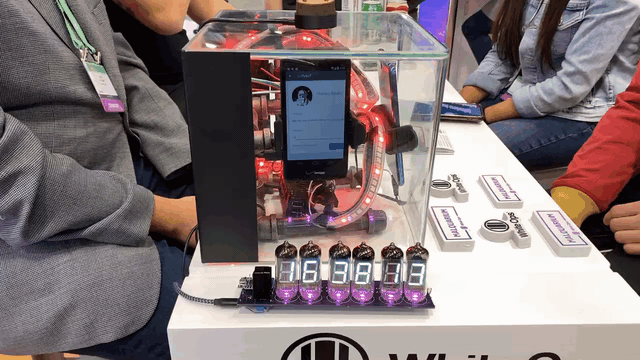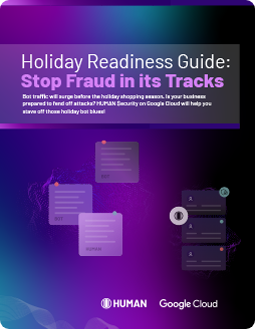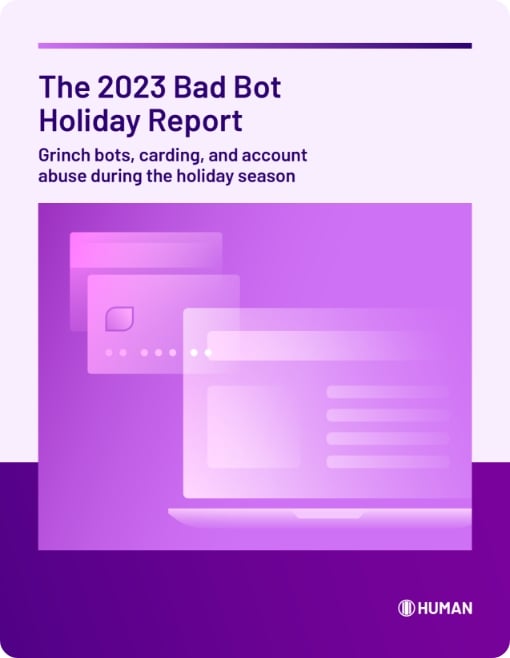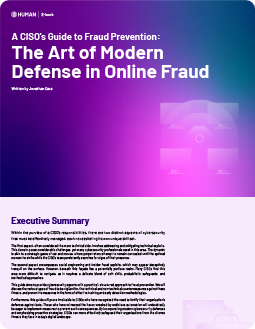Sourcing and nurturing prospective customers through various channels is a key focus of every Marketing team. Here at White Ops, our Marketing team inspires future White Ops advocates and engages with them with immersive experiences.
A great example of this is the Museum of Modern Malware that was showcased at DEFCON or the White Ops booth at RSA that featured a live “Malquarium” (Figure 1) showing bots attacking a website. The live discussions from events such as these are invaluable for engaging customers, understanding their needs, evaluating which products might best meet their pain points, and connecting them with Sales teams accordingly.

Figure 1: White Ops’ Malquarium at RSA 2020 showing a sophisticated bot trying to auto-create accounts on a website.
The pandemic has forced many marketers to pivot to exclusively digital plans, though. Events and conferences are now held online with virtual chats and break out rooms to keep conversations going. And with that, the impact on digital advertising has changed significantly. While digital advertising has always been a major chunk of a marketer’s budget, it now holds more weight than ever to ensure every dollar spent drives ROI as more consumer engagement and business is done online.
With this shift to an online focus, there are even more lucrative opportunities available for fraudsters to siphon the digital marketing spend that brands like yours are committing. We want to arm marketers with the information they need about marketing fraud and prevention tactics in order to both protect digital marketing budgets and target them towards human visitors (not bots).
Who’s Knocking at my Digital Front Door?
Things get a bit murkier in the digital world, where marketing strategies aim to inspire potential customers outside of human-to-human interactions. Typical marketing strategies encompass social, organic, and paid media efforts to incite buzz and create intrigue amongst target audiences. Upon attracting these audiences, the goal is to drive these—presumably human—visitors to your website and continue to build those connections, with the aim of converting them into leads. As the digital front door to your business, websites are critical tools for increasing brand awareness and engaging leads. Marketing teams work tirelessly to produce great content to greet visitors and invite them to stay a while.
How can you be sure that the visitors knocking on your digital door are actually human, as opposed to an automated bot crawling the web? Thanks to cybercriminals expanding their war chests with sophisticated bots that live alongside humans on their computers, the lines between human and bot activity become blurred. The human may drive activity across the Internet, making them a good candidate for your products. When you target a digital ad to their device, however, it can very well be a bot that sits on that same device that clicks on it in order to maximize click through rates fraudulently.
For example, the 3ve operators spoofed fraudulent domains and generated billions of fake bid requests. Sophisticated bots hiding on nearly 2 million user devices allowed for the bid requests to win. Then the ads were served and clicked on via invisible web browsers running in the background of the devices. Meanwhile, the 3ve operators watched their pirated ad revenue dollars grow exponentially until White Ops, the FBI, Google, Facebook, and many others helped takedown these fraudsters.
Don’t stand idly by while these sophisticated bots eat at your hard-won advertising and marketing budgets. In order to defend your digital front door from these robot intruders, work with partners that engage MRC-accredited anti-fraud vendors. This will help you to block the bots from even being able to view the ads, and save those campaign dollars for authentic human audiences. Learn more about the White Ops Advertising Integrity which provides real-time advertising protection across devices including desktop, mobile app & web, and CTV.
What if my Digital Front Door has been Breached?
Unfortunately, a sneaky bot was able to penetrate your digital front door and has landed on your website. It can now wreak havoc by browsing through your high value (read: form-fill and pricing) pages pretending to be an interested prospect. Even worse, it can invite the rest of its botnet gang members in. Suddenly your website engagement numbers spike. The Marketing team dives into the site analytics to learn more about your new visitors. After all, to them they are leads that need to be nurtured and qualified so that they can be handed off to the Sales team as soon as possible.
In an effort to replicate this “successful” visit from a target customer, they also analyze the channels these bots originated from and the content they consume. These insights then result in continued investment in the strongest performing channels. Automatic retargeting advertising campaigns execute with the goal of reinforcing your brand and instilling intrigue to drive continued exploration. If only these were human visitors, all of these efforts may lead to prospective customers reaching out to learn more about your products. Unbeknownst to your Marketing team, a large percentage of these interactions are with sophisticated bots that wreak havoc on your marketing results, siphoning of your marketing dollars to their creators.
It’s time to put an end to the vacation sophisticated bots are taking on your digital storefronts. With the power of the White Ops Marketing Integrity solution, you can differentiate human traffic from bot traffic. This enables you to filter out the bot traffic from your site analytics and understand your true performance with human audiences only. Additionally, you can investigate your website traffic’s bot composition rate and the marketing channels that are allowing these bots through. Leverage White Ops reports to hold your partners financially accountable to the quality of the traffic they bring to your site. With the right data, you can make the right decisions on partners, channel optimizations, and content strategy to drive better business results.
How do I Clean Up the Mess Bots Left Behind?
While your unwelcome bot guests stroll through your website, they can leave messes that not only skew your marketing and advertising performance analytics but also corrupt your data. For example, a sophisticated bot may have entered a dummy email address into the ”Contact Us” form on your website. Alternatively, an email address stolen or harvested from a data breach could just as easily be used. The email address flows through into your CRM system and triggers your Sales team’s outreach workflow. A sequence of emails meant to intrigue a potential customer are now unsuspectingly sent to a bot or pilfered email instead. Even after the email campaign is over, the email address sits in your CRM system where it can easily be picked up for the next set of emails continuing the cycle. Meanwhile your emails could continuously be marked as spam by humans that receive them, but had never knowingly provided their emails in the first place. This will result in a negative impact to your email sending score and inhibit future campaigns. Not to mention the wasted storage space that all of these falsified email addresses are consuming.
The above also holds true for other systems in your marketing technology ecosystem, such as your DMP. Your bot visitors’ information take residence there and automatically become eligible for retargeting campaigns. As ads continue to be served to these bots, they happily accept the invitation to your digital front door. How can you clean up the mess?
We recommend that you identify the bots lurking in your systems and remove them to prevent not just wasted marketing spend but also wasted time in follow up outreach. Use the Marketing Integrity solution to shed light on these bots’ digital footprints (e.g. associated session identifier) and remove any associated information in your systems. Additionally, employ the Application Integrity offering to prevent the bots from filling out your lead generation forms. This would deny bots the in-system residence and the mess that they seek.
Shutting Down the Bots through the Funnel
At White Ops, we remain vigilant to identify the bots hiding within and inaccurately bloating your digital marketing performance metrics. Our Marketing, Detection, Threat Intelligence and Product teams work together to analyze the activity associated with sophisticated invalid bot traffic visiting www.whiteops.com. Our marketing team relies on these insights to answer the tough questions that uncover our true performance and improvement areas. We can do the same for you. So, how much of your website traffic is really human?








